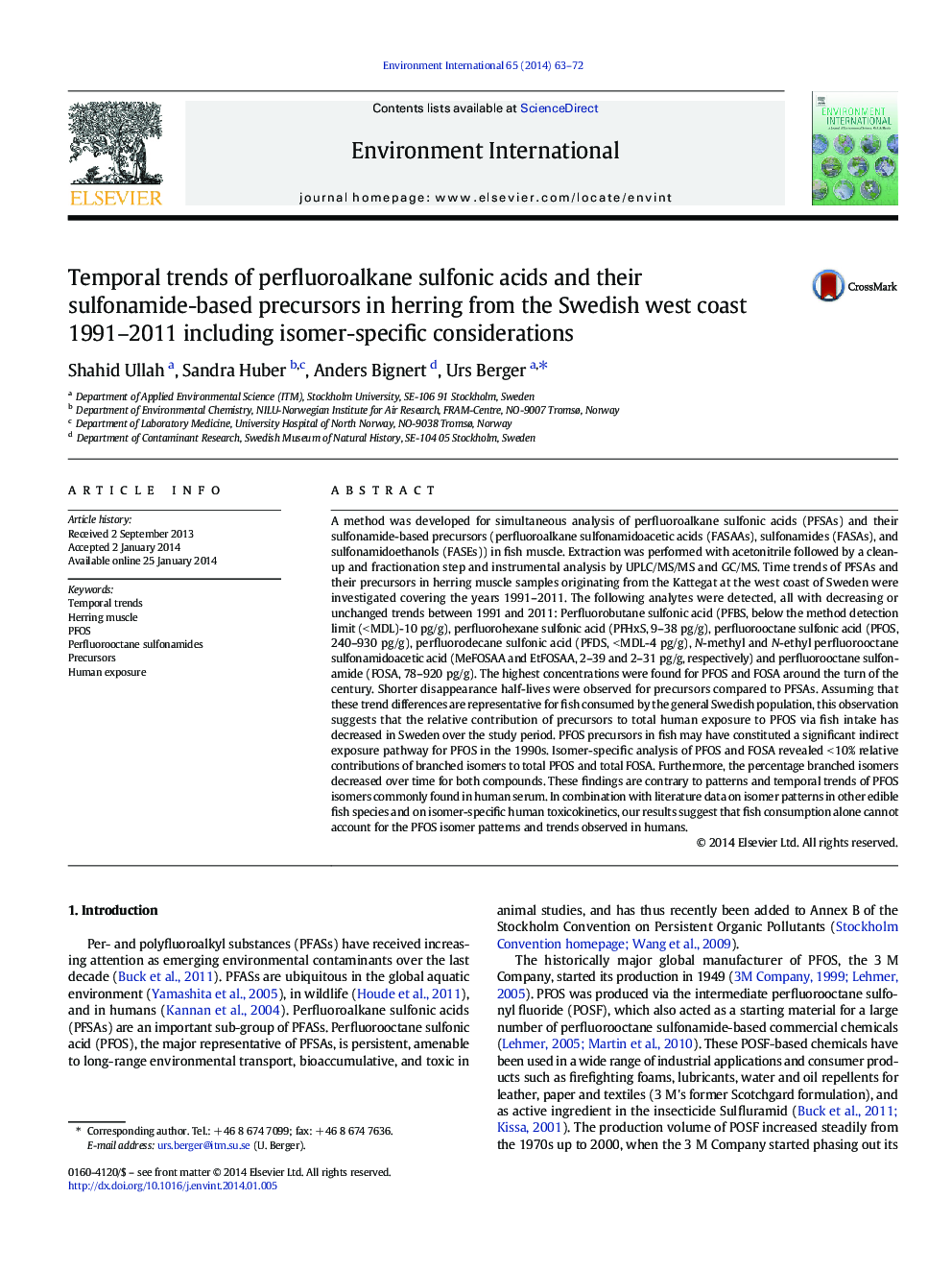| کد مقاله | کد نشریه | سال انتشار | مقاله انگلیسی | نسخه تمام متن |
|---|---|---|---|---|
| 4422806 | 1619063 | 2014 | 10 صفحه PDF | دانلود رایگان |

• We investigate time trends of PFSAs and their precursors in herring from Sweden
• We find highest concentrations for PFOS and FOSA around the year 2000
• Precursor levels decrease at a faster rate than PFSAs between 1991 and 2011
• Human exposure to PFOS precursors via fish intake may have been important in the 1990s
• Fish consumption alone cannot explain PFOS isomer patterns in humans
A method was developed for simultaneous analysis of perfluoroalkane sulfonic acids (PFSAs) and their sulfonamide-based precursors (perfluoroalkane sulfonamidoacetic acids (FASAAs), sulfonamides (FASAs), and sulfonamidoethanols (FASEs)) in fish muscle. Extraction was performed with acetonitrile followed by a clean-up and fractionation step and instrumental analysis by UPLC/MS/MS and GC/MS. Time trends of PFSAs and their precursors in herring muscle samples originating from the Kattegat at the west coast of Sweden were investigated covering the years 1991–2011. The following analytes were detected, all with decreasing or unchanged trends between 1991 and 2011: Perfluorobutane sulfonic acid (PFBS, below the method detection limit (< MDL)-10 pg/g), perfluorohexane sulfonic acid (PFHxS, 9–38 pg/g), perfluorooctane sulfonic acid (PFOS, 240–930 pg/g), perfluorodecane sulfonic acid (PFDS, < MDL-4 pg/g), N-methyl and N-ethyl perfluorooctane sulfonamidoacetic acid (MeFOSAA and EtFOSAA, 2–39 and 2–31 pg/g, respectively) and perfluorooctane sulfonamide (FOSA, 78–920 pg/g). The highest concentrations were found for PFOS and FOSA around the turn of the century. Shorter disappearance half-lives were observed for precursors compared to PFSAs. Assuming that these trend differences are representative for fish consumed by the general Swedish population, this observation suggests that the relative contribution of precursors to total human exposure to PFOS via fish intake has decreased in Sweden over the study period. PFOS precursors in fish may have constituted a significant indirect exposure pathway for PFOS in the 1990s. Isomer-specific analysis of PFOS and FOSA revealed < 10% relative contributions of branched isomers to total PFOS and total FOSA. Furthermore, the percentage branched isomers decreased over time for both compounds. These findings are contrary to patterns and temporal trends of PFOS isomers commonly found in human serum. In combination with literature data on isomer patterns in other edible fish species and on isomer-specific human toxicokinetics, our results suggest that fish consumption alone cannot account for the PFOS isomer patterns and trends observed in humans.
Figure optionsDownload as PowerPoint slide
Journal: Environment International - Volume 65, April 2014, Pages 63–72